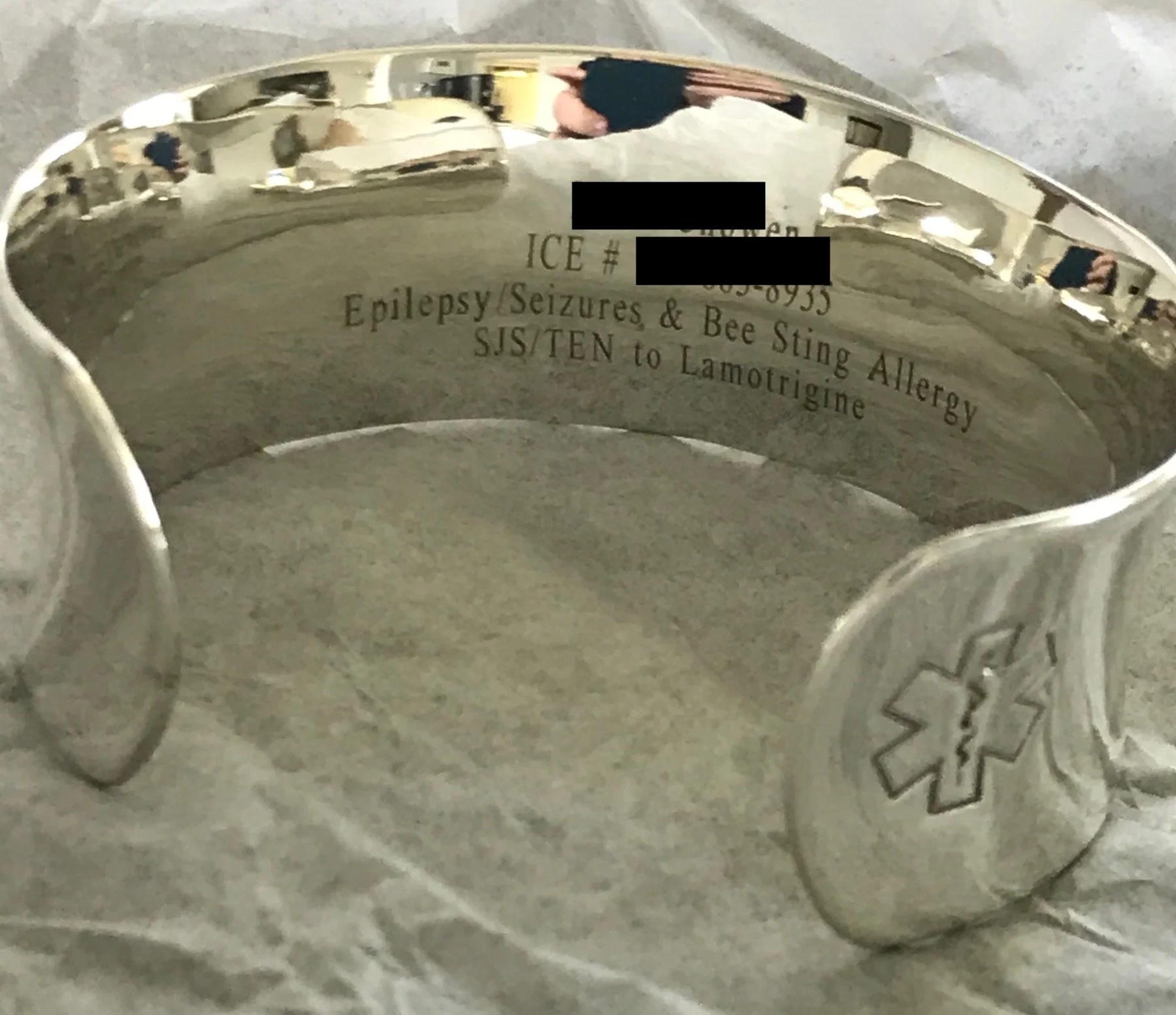Bee Allergy Bracelets
Bee sting allergies are a common and potentially life-threatening condition that affects many people around the world. While some people may only experience mild symptoms such as swelling and itching, others may develop severe allergic reactions that can lead to anaphylaxis and other serious complications. It is crucial for people who have bee sting allergies to be aware of the symptoms and treatment options available, as well as the importance of wearing a medical ID bracelet or necklace to ensure that medical professionals are aware of their condition in case of an emergency.
Why it is crucial to wear a medical ID if you have Bee Sting Allergies:
Wearing a medical ID bracelet or necklace is essential for people who have bee sting allergies. Here's why:
In case of emergency: In an emergency situation, medical professionals may not be aware that the patient has a bee sting allergy. A medical ID can provide critical information about the patient's medical history, which can help ensure that they receive appropriate treatment.
Epinephrine administration: In cases of anaphylaxis, epinephrine is the first-line treatment. A medical ID can alert medical professionals to the patient's allergy and the need for immediate administration of epinephrine.
Communicating with medical professionals: A medical ID can provide essential information about the patient's condition, medication, and treatment plan, which can be useful in communicating with medical professionals.
Avoiding future stings: People who have bee sting allergies need to take extra precautions to avoid future stings. A medical ID can serve as a reminder to medical professionals to avoid administering certain medications or treatments that may trigger an allergic reaction.
Symptoms of Bee Sting Allergies:
Bee sting allergies can cause a range of symptoms that can vary in severity depending on the individual. Some common symptoms of bee sting allergies include:
Localized swelling and redness: This is the most common symptom of a bee sting and typically occurs at the site of the sting.
Itching and hives: In addition to swelling and redness, bee stings can also cause itching and the development of hives.
Difficulty breathing: In severe cases, bee sting allergies can cause difficulty breathing and wheezing, which can be a sign of anaphylaxis.
Rapid heart rate: Bee sting allergies can cause a rapid heartbeat, which can lead to dizziness and fainting in some cases.
Treatment of Bee Sting Allergies:
The treatment of bee sting allergies can vary depending on the severity of the reaction. Some common treatments for bee sting allergies include:
Epinephrine: In cases of anaphylaxis, epinephrine is the first-line treatment and can be administered through an auto-injector such as an EpiPen.
Antihistamines: Antihistamines such as Benadryl can be used to relieve itching and reduce swelling.
Corticosteroids: In some cases, corticosteroids such as prednisone may be prescribed to reduce inflammation and swelling.
Avoidance: The best way to prevent bee sting allergies is to avoid contact with bees and other stinging insects.
Bee sting allergies can be a serious and potentially life-threatening condition that requires careful management and treatment. By being aware of the symptoms and treatment options available, people who have bee sting allergies can take steps to manage their condition effectively and reduce their risk of complications. Wearing a medical ID bracelet or necklace is an essential step for people who have bee sting allergies, as it can provide critical information about their condition and ensure that they receive appropriate treatment in case of an emergency. By taking these steps, people with bee sting allergies can lead healthy and fulfilling lives while managing their condition effectively.
Online Resources For Bee Sting Allergies
Food Allergy Research & Education (FARE): FARE provides information, resources, and support for individuals with various allergies, including bee allergies.
American Academy of Allergy, Asthma & Immunology (AAAAI): The AAAAI offers information on allergic reactions, including bee allergies, and provides resources for patients and healthcare professionals.
The Bee Cause Project: This educational initiative focuses on promoting awareness and understanding of bees and their importance while also addressing bee allergies.
National Institute of Allergy and Infectious Diseases (NIAID): Part of the NIH, NIAID provides resources and research updates on allergies, including bee sting allergies.
Anaphylaxis Campaign: A UK-based organization providing support, information, and resources for individuals with severe allergies, including bee allergies.
Asthma and Allergy Foundation of America (AAFA): AAFA provides resources for individuals with allergies, including bee allergies.
World Allergy Organization (WAO): WAO provides global resources and information on allergies and allergic diseases.
